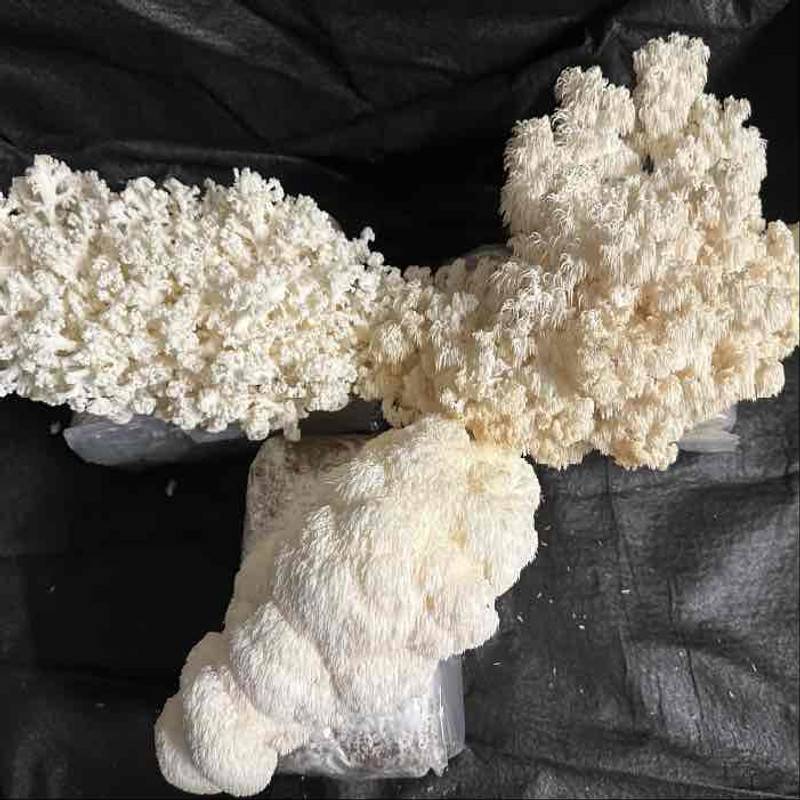The Hericium Trio: Lion's Mane, Coral Tooth, and Comb Tooth. All three of these cultures are mushrooms in
Lion's Mane - Hericium erinaceus
This Hericium has spines longer than one centimeter.... Up to 6 cm arising from a single large knot of tissue. Lion's Mane can be found on wounds of living trees as well as dead ones. Lion's Mane tends to have the longest spines of any of the 3 species we're covering in this blog. On supplemented sawdust blocks Lion's Mane produces large, dense clusters.
Texture: The texture of Lion's Mane is often compared to mock crab and is commonly used as a vegetarian substitute for crab cakes! Lion's Mane is the most chewy and succulent of three.

Coral Tooth - Hericium coralloides
This Hericium has spines arising from many long branches but the spines are short; less than 1 cm in length. The branches are delicate, but bouncy. On supplemented sawdust blocks, Coral Tooth grows in large, airy clusters that shows off its coral-like form!
Texture: Coral Tooth is more crunchy when compared to the chewiness of Lion's Mane. This species has a slightly sweeter and peppery taste as opposed to the strong taste of Lion's Mane.

Comb Tooth - Hericium americanum
This Hericium has spines longer than one centimeter and up tp 4 cm that arise from short, sturdy branches. While Comb Tooth can be grown on supplemented sawdust blocks, they area also well-adapted to growing on logs, and often our choice when inoculating.
Texture: Texturally, Comb Tooth has characteristics of both Lion's Mane and Coral Tooth. Slightly less chewy than Lion's Mane, but not nearly as crunchy as Coral Tooth.

Differences between Lion's Mane, Coral Tooth, and Comb Tooth
While these three can look similar to the untrained eye, all three have unique clustering or branching patterns that can distinguish one from another. The spine length between the three can also differ- though, if left to grow past its prime, both Lion's Mane and Comb Tooth can have rivaling spine lengths. Because of their growth patterns, all three have slightly different textures for culinary purposes.
Similarities between Lion's Mane, Coral Tooth, and Comb Tooth
All three are best picked before they get yellow; harvesting younger is better. While the medicinal compounds in both Coral and Comb Tooth mushrooms are less studied than Lion's Mane, all three assume to have similar medicinal qualities.
The grey area... Common names. Coral Tooth, Comb Tooth, Lion's Mane, Bear's Head, Monkey's Head, Pom Pom. All of these names are used interchangeably depending on your location and familiarity with the mushrooms. If you're looking to grow a certain species, we recommend searching for the scientific name to ensure that you are getting what you want to grow!

